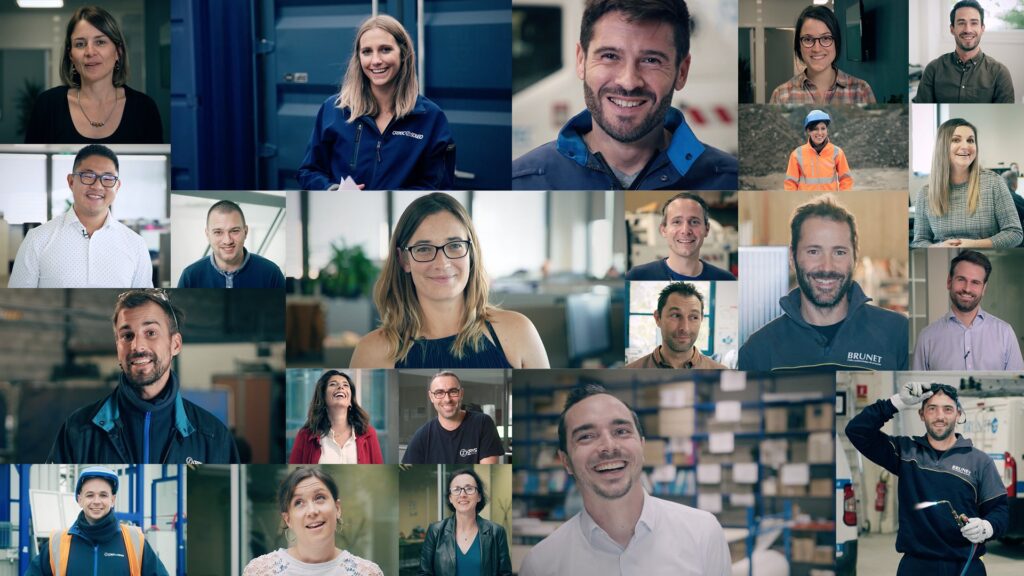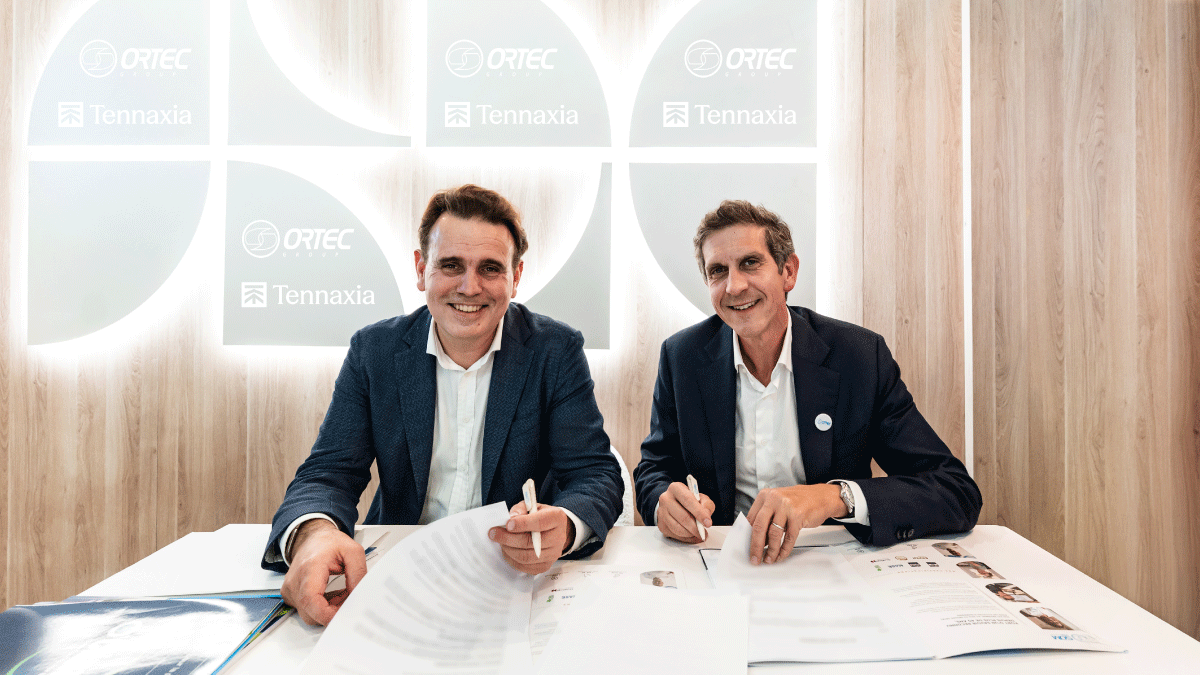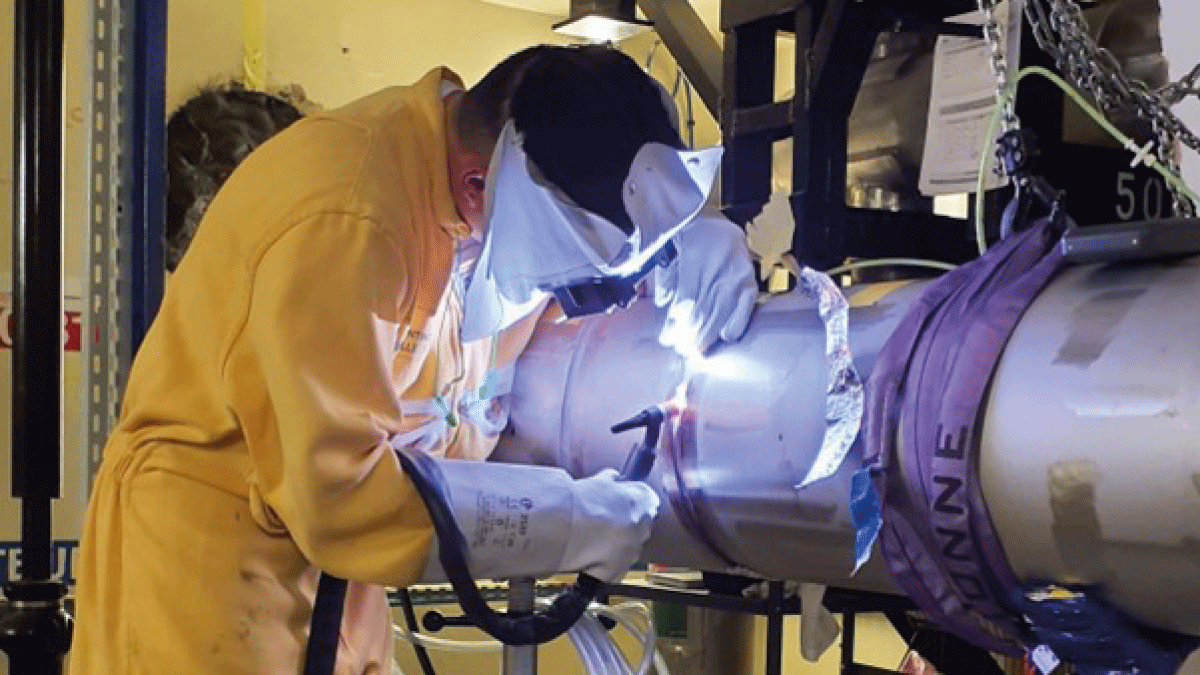Thermal desorption: an effective remediation technique for treating soils heavily impacted by recalcitrant pollutants
Driven by a sustainable and responsible vision of its activities, Ortec-Soléo, the Ortec Group’s remediation subsidiary, has developed its own thermal desorption technologies for both on-site and in situ treatment. This technique is particularly well suited to the treatment of soils heavily impacted by organic pollutants: hydrocarbons (diesel, oil, heavy fuel), chlorinated solvents, PCB, pesticides, PAH, etc.
Thermal desorption is a more environmentally friendly alternative compared to conventional soil remediation methods that involve excavation and off-site disposal, regardless of whether gas or electricity is used to heat the soil. To minimize greenhouse gas (GHG) emissions, Ortec-Soléo prioritizes electrically powered technology, reducing emissions by a factor of seven compared to fossil fuel-based alternatives.
However, in cases where electrical supply is insufficient or unavailable, Ortec-Soléo also has expertise in using gas for soil heating.

Method principle
This decontamination method involves heating polluted soils to temperatures between 80°C and 200°C, depending on the characteristics of the pollutants.
By increasing the temperature, the process enhances the desorption of contaminants adsorbed onto the soil matrix and facilitates the vaporization of low-volatility compounds, enabling their extraction in the gas phase. Some pollutants also undergo in-situ thermal decomposition (thermolysis).
The released contaminants are immediately captured using an extraction system, and treated on-site via a condensation device, concentrating the pollutants for minimal waste management.
This technique can be applied in situ (directly within the impacted soils via boreholes) or on-site after excavation of polluted soils and construction of a heated treatment mound.
Ortec-Soléo has developed two innovative approaches for both treatment methods:
- In situ treatment: the use of specialized heating cartridges enables targeted heating of selected areas within the soil. This precise temperature control optimizes treatment and saves energy.
- On-site treatment: a connected network of electric heaters is placed at the core of the heated soil pile. This system is highly energy-efficient and reliable, ensuring simplified technical monitoring and optimal soil heating.
ADVANTAGES
- Treatment efficiency of 90 to 99%, even in clayey and heterogeneous soils
- Precision and reliability for targeted remediation of source areas
- Possible preservation of existing structures without demolition
- Capability to reach significant depths (for in situ applications)
- Reduced costs and GHG emissions due to in-soil thermolysis of a significant portion of contaminants (depending on the type of pollutants treated)
- Odor-free process and minimal waste generation

Technology supported by an active R&D approach
Ortec-Soléo is a specialist in environmental remediation – particularly in situ – and site rehabilitation, and has always had design engineering activity based on laboratory tests and pilot field trials. This expertise ensures the design, sizing and safety of remediation operations, allowing adaptation to evolving methodologies and increasingly complex pollution challenges.
The thermal desorption technology results from over 10 years of research by Ortec-Soléo’s technical division. The units are designed and built in-house using reliable materials and equipment available on the market. Their operational efficiency is based on extensive field experience and feedback.
Ortec-Soléo’s technological independence in the market enables it to support its customers at every key stage of their rehabilitation project. Each technical desorption treatment solution is designed according to the characteristics of the worksite.
Preliminary tests in the laboratory, followed by potential pilot field trials, help refine the system’s parameters, secure the project, and provide strong, realistic performance guarantees. This experimental approach is essential for addressing complex sites with multiple constraints.
Ortec-Soléo also integrates all the operations associated with thermal treatment – building monitoring, groundwater lowering, additional in situ treatment, excavation, etc. – as part of a technically optimized and economically viable comprehensive rehabilitation project.

Energy efficiency and CO₂ emission reduction
As part of its continuous development, Ortec-Soléo has made thermal remediation solutions more sustainable in terms of carbon footprint.
Energy efficiency has been improved across all levels, focusing on both environmental and financial performance:
- Process optimization:
- Innovative heater tube design increases surface contact with contaminated materials
- Advanced gas management system using condensation, phase separation, and activated carbon filtration, ensuring minimal waste generation
- Optimized energy supply:
- Electricity is prioritized for the process, as it provides a 35% higher energy efficiency compared to gas while significantly reducing GHG emissions. Ortec-Soléo also masters gas-based thermal desorption to adapt to site-specific energy availability and fluctuating energy costs. Treatment can then be performed using electric, gas, or hybrid solutions, allowing for better energy cost control.
- Smart SH®: innovative heating control system
This tool has been developed for energy-intensive projects where heat distribution is critical. This intelligent system adjusts heating power based on site conditions and available energy, ensuring maximum efficiency and energy savings.

Notable in situ treatment references
10,000 m³ of soil under a building contaminated with organic pollutants (TPH, PCB, CVOCs) in Pringy (Haute-Savoie, 74)
Thermal treatment conducted beneath a 1,500 m² building, reaching depths of up to 8 meters, on a former energy sector site undergoing decommissioning. The fully automated system was entirely designed and implemented by Ortec-Soléo, with remote monitoring and control.
- Laboratory testing (capacity and thermal conductivity) combined with a six-month field pilot trial (mass balance assessment)
- Full-scale in situ thermal treatment deployed with 360 heating rods
- Groundwater extraction and treatment via 66 wells
Results:
- Nearly 90% pollutant reduction in 1 year of treatment
850 m³ of soil under a building impacted by chlorinated solvents – Quincieux (Rhône, 69)
Pilot field and laboratory tests conducted to design a soil remediation strategy for a former industrial building. The estimated contaminant mass balance was 6 tons across two zones.
The thermal desorption (TD) treatment was executed in two phases, the first in an unsaturated zone, the second in a saturated zone within a clay lens at a depth of 8 to 10 m.
For each treatment phase, 104 heating cartridges and 12 gas extraction and groundwater pumping wells were installed (target temperature of 80°C at cold point). Ortec-Soléo’s electric TD system enabled precise control of each heating needle, optimizing the project’s overall energy efficiency.
Remote monitoring system, secured pumping system, and building movement tracking were implemented (100% Ortec-Soléo design and execution).
The treatment lasted 12 months.
Results:
- Phase 1: 1.9 tons of CVOCs recovered (96% of mass balance)
- Phase 2: 6 tons of CVOCs recovered (150% of mass balance)

8,000 m³ of soil contaminated with TPH and phthalates – Trévoux (Ain, 01)
After the heating phases, sampling points were installed directly within the treatment piles to verify decontamination.
Two heated piles of 1,600 m³ and 2,100 m³ were created with pre-screened soils. To optimize energy efficiency, soil was positioned strategically based on target temperatures. Twenty gas burners supplied the required heat over an eight-week treatment period. A gas-efficient heating pile design was implemented, incorporating gas effluent condensation treatment (engineered by Ortec-Soléo).
Results:
- 8,000 m3 of soil excavated and requalified by removing polluted meshes up to 50 cm below the water
- Skimming and on-site storage of floating phase contaminants

Soils of an industrial brownfield impacted by high-concentration naphthalene in Souffelweyersheim (Bas-Rhin, 67)
Laboratory column tests and pilot field trials successfully addressed naphthalene crystallization issues and recommended a full-scale treatment using 96 heating needles installed over a 1,050 m² area of soil, reaching a depth of 4 meters, with a total heating power of 340 kW.
Pollution extraction was carried out using 26 needles (total flow rate of 250 m³/h). Gas treatment was ensured through condensation followed by activated carbon filtration. The entire system was controlled by an automated unit (PLC).
Results:
- Recovery of 5,300 kg of pure naphthalene through the condensation system
- 90% removal of the initial naphthalene mass, and over 90% of other pollutants (BTEX, C5-C12 hydrocarbons)
- Nearly 40 tons of hydrocarbon pollutants extracted from the ground





